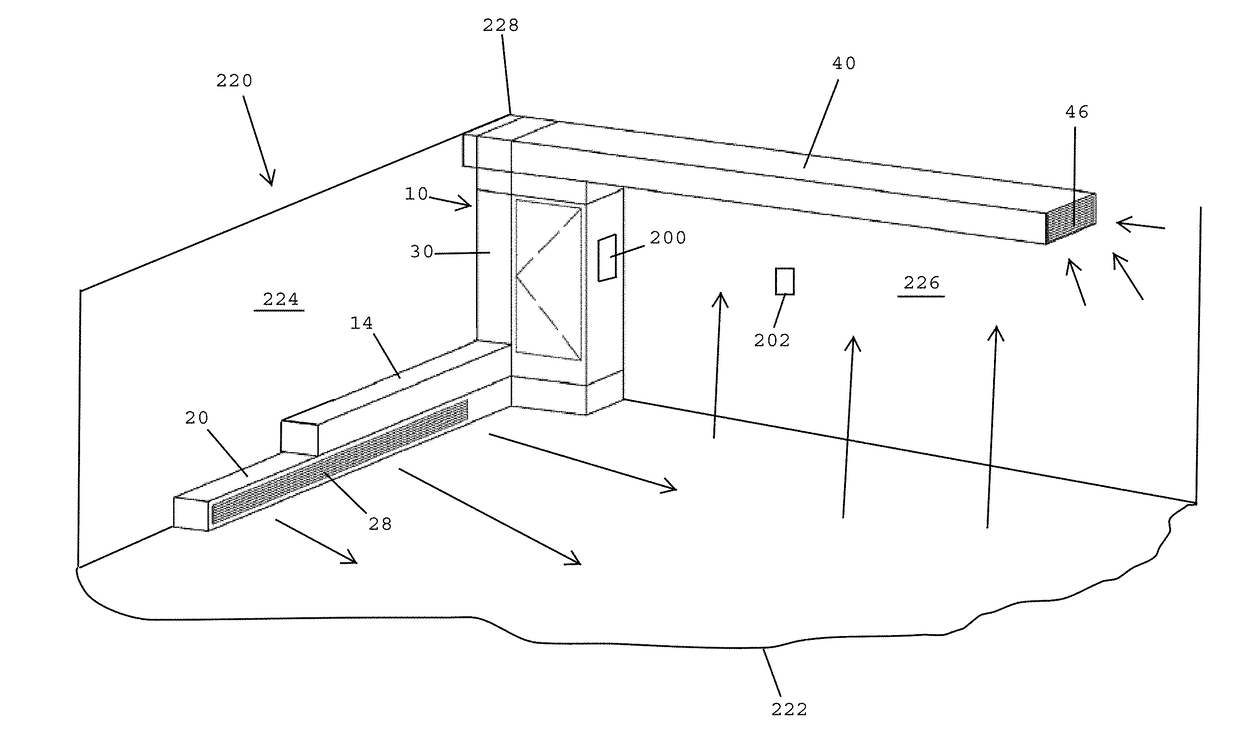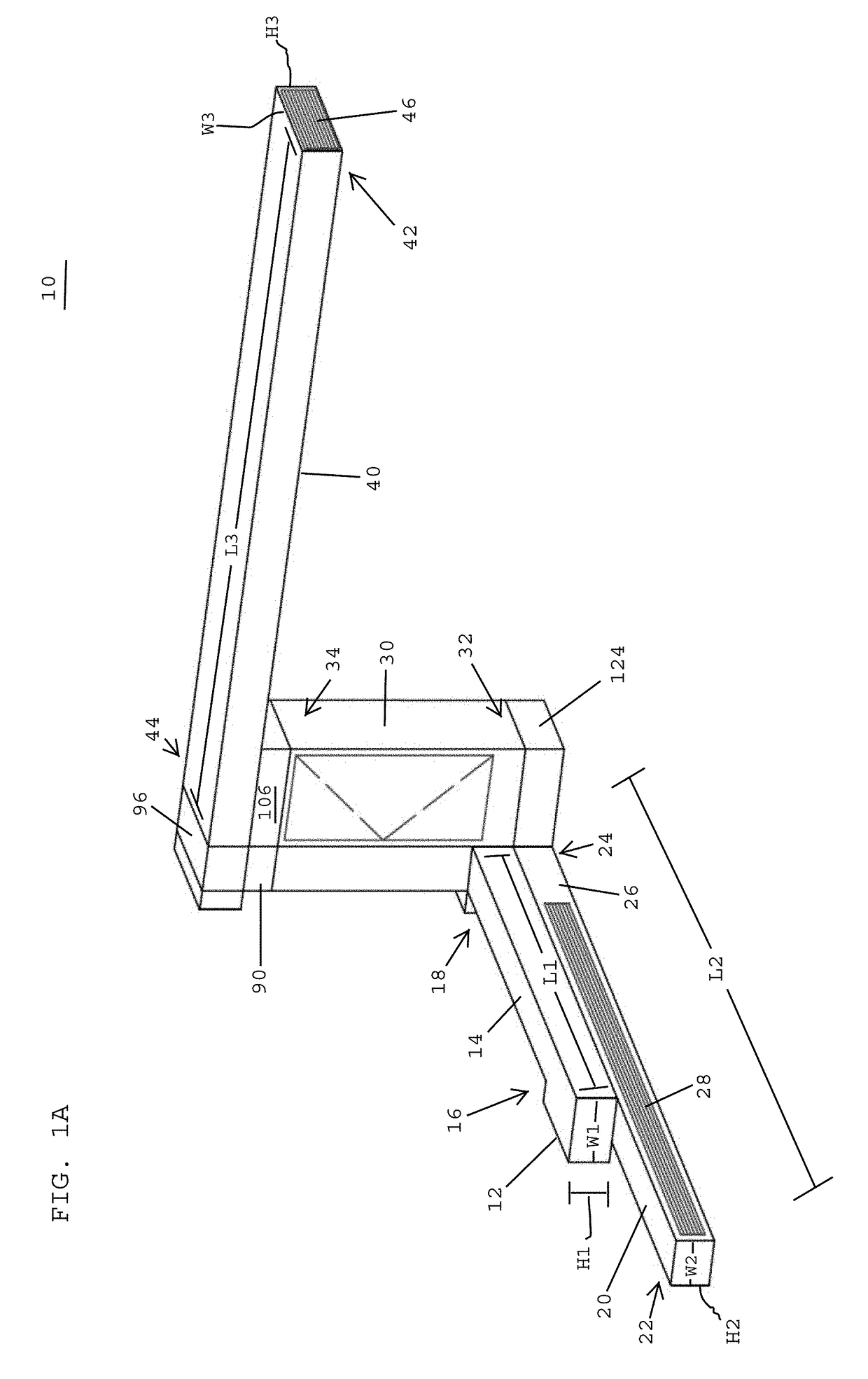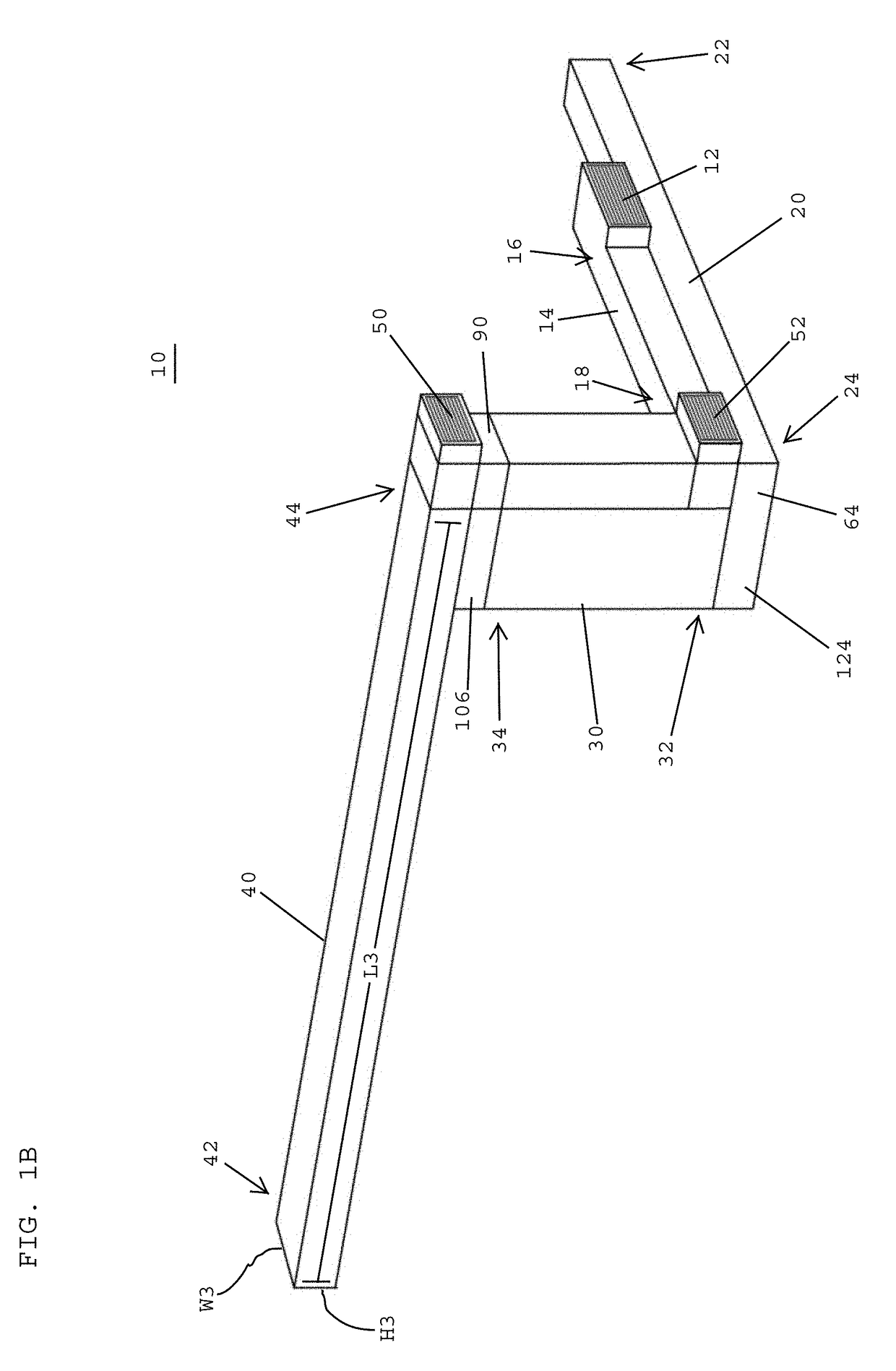Displacement ventilation systems for enclosed spaces
a technology of displacement ventilation and enclosed spaces, which is applied in ventilation systems, lighting and heating apparatus, heating types, etc., can solve the problems of relatively quiet air leaving a linear diffuser, low air velocity, etc., and achieves the effects of minimizing noise, minimizing energy use, and reducing nois
- Summary
- Abstract
- Description
- Claims
- Application Information
AI Technical Summary
Benefits of technology
Problems solved by technology
Method used
Image
Examples
Embodiment Construction
[0040]Referring to FIGS. 1A and 1B, in one embodiment, a displacement ventilation system 10 for ventilating, heating and / or cooling an enclosed space, such as a room within a building, preferably includes an air inlet 12 for supplying outside air to an air inlet duct 14. The air inlet duct 14 preferably has an upstream end 16 adjacent the air inlet 12 and a downstream end 18 remote therefrom. As used herein, the terminology “upstream” and “downstream” indicate the direction of flow of air through the displacement ventilation system of the present application. In one embodiment, the air will flow from the “upstream” region to the “downstream” region. In one embodiment, the air inlet duct 14 preferably extends horizontally over a floor of an enclosed space. In one embodiment, the air inlet duct 14 has a length L1 of between about 12-16 feet, a height H1 of between about 6-18 inches, and a width W1 of between about 18-36 inches. The relatively large dimensions noted above, in compariso...
PUM
 Login to View More
Login to View More Abstract
Description
Claims
Application Information
 Login to View More
Login to View More - R&D
- Intellectual Property
- Life Sciences
- Materials
- Tech Scout
- Unparalleled Data Quality
- Higher Quality Content
- 60% Fewer Hallucinations
Browse by: Latest US Patents, China's latest patents, Technical Efficacy Thesaurus, Application Domain, Technology Topic, Popular Technical Reports.
© 2025 PatSnap. All rights reserved.Legal|Privacy policy|Modern Slavery Act Transparency Statement|Sitemap|About US| Contact US: help@patsnap.com



